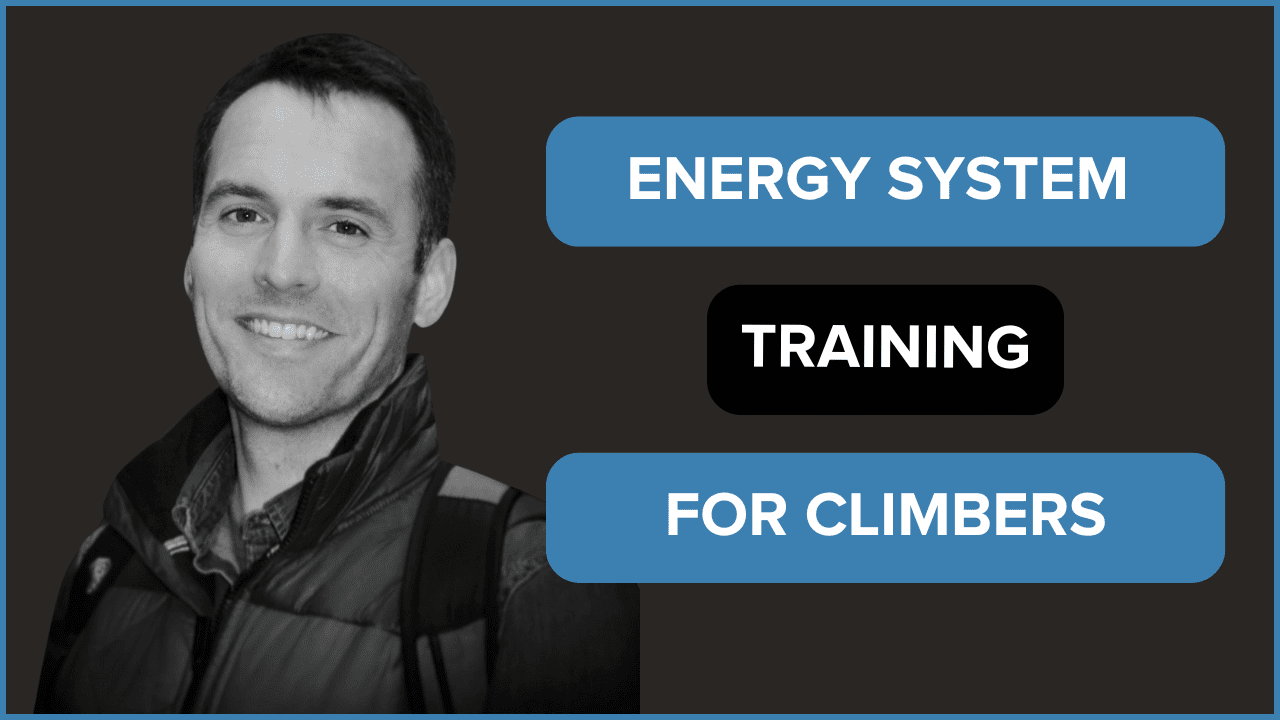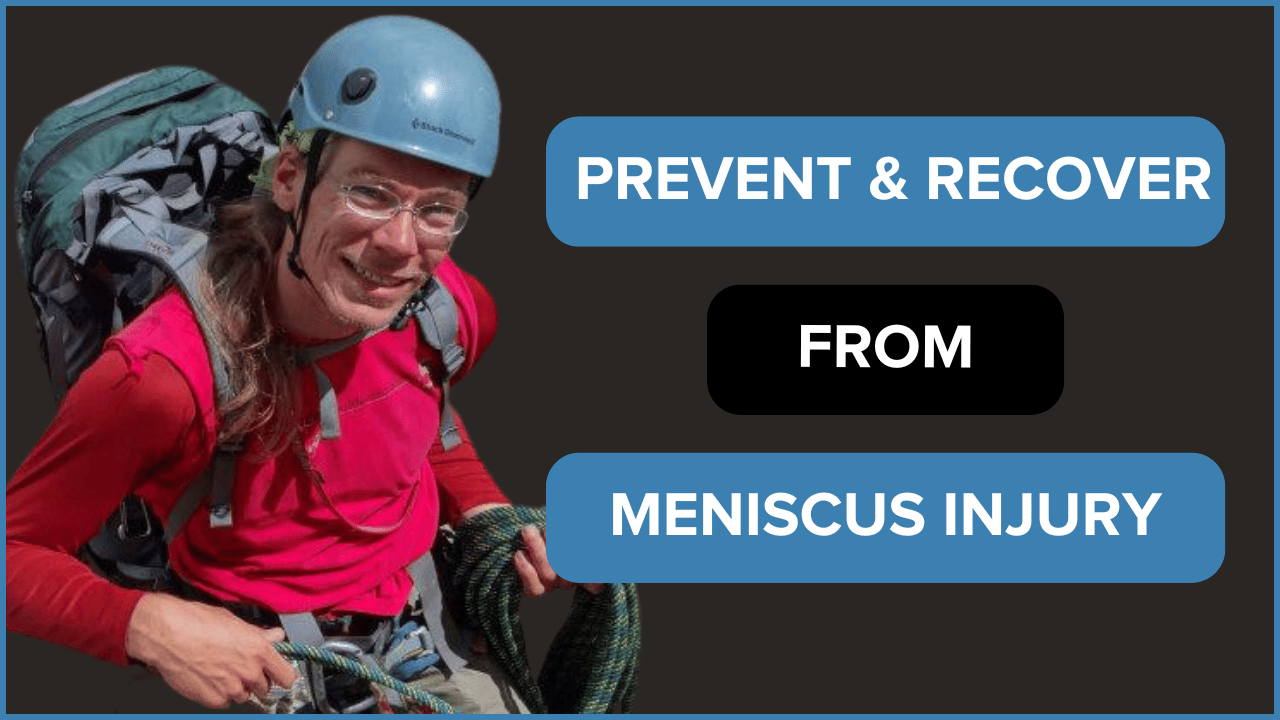S1, E1: Move Right and Stay Healthy Climbing – John Kettle
In this episode, The Climbing Doctor talks climbing movement with an expert on the subject, John Kettle! John is an experienced coach of over 20 years and is the author of “Rock Climbing Technique.” Watch this video to learn about John’s journey with injuries and how he applies movement to improve climbing performance.
Listen on Apple Podcasts, Spotify, or wherever you listen to podcasts!
- 0:00 Intro
- 0:55 John Kettle’s battle with finger injury and subsequent management
- 8:10 John Kettle’s approach to managing his shoulders
- 20:23 Further injury history and management
- 23:45 Relationship between climbing movement with performance and injury
- 29:36 Changing climbing movement behaviors
- 47:10 Leveraging tension for improved climbing movement
- 50:51 John Kettle’s key tips for improving performance
- 52:40 Outro and contact information
If you would like to listen to the entire interview with Steve Bechtel, check out the podcast. If you want to watch the interview, click the YouTube link or any of the timestamps above. If you would like to read quick sample of the interview, check out the excerpt from the interview below.
John, can you introduce yourself to to people that who may not know?
Yeah, sure. Thanks Jared. I’m John kettle. I’m a a full-time rock climbing coach. I guess I’m also known as, as the author of a book on climbing technique as well. I’ve been climbing, I think, 27 years now and coaching for about 20.
What injuries have you had as a climber?
There’s one that physically sticks with me, but still a rough one, actually. So I was psyched out my mind for climbing when I started it. And I started as a teenager at about 15. What I didn’t know at the time I found out that I was developmentally delayed two years. So I, was starting when I thought I was physically mature, but actually my growth plates were still developing. And the result was that you know, at the time in the indoor routes were kind of made harder by making them more fingery. And I remember doing a competition route when I was 17, it was entirely on screw ons, you know, the tiny holds. And basically I had a favored crimping. I came into the sport physically very strong from a range of other sports, except for my fingers weren’t strong. So I had no sport specific strength for climbing. I was super strong so I would force drag myself up these roots by force of will. And I absolutely hammered my fingers. I ended up with basically growth plate damage to the DIP joints, the end joints of every finger. But yeah, I hurt my fingers pretty badly, you know, and those DIP joints have been swollen ever since. And I eased back into, into climbing very cautiously and, and got back into it and was fine, and the joint pain went away.
And then at the end of my thirties, those joints started to become an issue. I mean, there’s a whole load of elements to osteoarthritis and so on, and there’s a genetic element too, but it’s the end joints which are kicking off and they’re all kicking off at different stages. So now I’ve got like arthritic fingers for the future, which I’m learning to manage as I climb. So I think that’s the big cautionary tale I tell young keen people who look a bit like I did at the time. I’m like, you know, this growth plate thing is serious and you’ll have to live with it for the rest of your life if you overstep it. So that, that’s probably the, the worst one.
What do you do now for your DIP joints? To manage the symptoms?
I had a strong preference for crimping and so changed that at the end of my twenties. The finger arthritis has been a massive incentive to work on my open grip. So I’ve got tons stronger on various open grip positions now. And the result is that I almost never crimp anymore, like full crimp with a thumb over. The last really crimpy thing I did was six months ago. And that was like the crux of a V11 where I was crimping bit. And I just half crimped it all, So I’ve got way stronger on half crimp and I just hardly ever have to crimp anymore cuz I’ve sorted out the other grips. I still say that I keep like I keep some emergency crimps in my back pocket particularly for when I’m terrified and I need not to die, but yeah, you know, all it really affects now is my choice of problems. It doesn’t actually affect my top performance.
Are there any other injuries you’ve had that’s affected your climbing that you’ve been able to either manage or have had trouble with?
I’ve had issues in my elbows. I’ve had golfers and tennis elbow on and off since I was 18 and still managed them now. So that’s like 20 plus years. And then my shoulders are probably the worst injuries I’ve had to deal with in terms of stopping me climbing. So I tore my labrum on both shoulders. And, and it took four years of unsuccessful conservative rehab to work out that they needed surgery and then had surgery to both. So that was a bit of an injury epic. I was kind of very strong and good at applying force. I had poor posture. I was climbing, white with kayaking, and downhill mountain biking. You know, living that life. And had been for 15 years at that point. So my body was just taking it hammering really. And my shoulders are much stronger and healthy now than they ever were in my teens or twenties.
What’s your secret? What do you do now for your shoulder health?
Well, it would be, my secret is 10 years of trying to get them better, basically. Yeah. All this, all this stuff. But improving my range of motion overhead range helped cuz I was a bit of a classic hunch climber in my late twenties. So improving my thoracic extension getting my chest a bit more flexible, allowed my spine to bend more. And then that put less stress on my shoulders. And then increasing my flexibility overhead really helped. A lot of rings overhead exercises helped in initially. I did like three years of pretty flat out high intensity rings work. That that was the first thing that really dramatically improved my shoulders.
Let’s talk a little about climbing movement. How important is good technique to preventing injury and any tips you have?
Yeah. There’s a lot, lot of things to learn through good technique. I’m fascinated by climbing movement. And for me, especially how it relates to injuries not as much performance, but how it relates to loading tissues. I think that having a strong preference for one kind of grip can get climbers in trouble. I most commonly see people doing that with crimping. And if that’s the case, a three finger sloth movement exercise is for them. I definitely correlate using only one grip type with injury. And I think there’s an increased chance of becoming injured as you become less adaptable and you try and make things fit the crimp more and more. But the, I see the same with other grip dependence as well. So people that always three finger never use their thumb or they’re pinky. Quite often they basically end up being pushed into a position where they have to crimp and they, and they’re not really prepared for it. So they’re much more vulnerable there because they’re not really conditioned. So yeah, I think, I think having a strong preference for one particular finger grip orientation is a risk factor just from my observed experience.
What is your movement prescription if a climber is too static?
The first thing I’d probably do is give them an exercise where they didn’t have an option to move statically, to see how they cope. So for example, I’d get them to climb, but give them the rule that they can only move both hands at the same time and give them some easy climbing to do and see what happens. And you’ve not had to tell them overtly don’t move statically. You’ve just presented them with a problem where the only solution is to move dynamic and it’s going to show you their ability to organize their body and express power and timing and accuracy and all those things. And actually by moving both hands together, they have to rely on proprioceptive awareness rather than sight to guide their hand to each individual hold. Because they’re happy to move both together. So a task like that would be the kind of start point typically. And then I guess modifications from that return into more normal climbing would be to give them exercises where they had to start every move with their hips before their arms and hands move. Initiating from the hips. And you can initiate from various different areas depending on the climb, but just getting them to start things in different places in their body. Getting them to keep their hips continuously moving while they climb. That’s that’s a pretty tricky drill and fries people’s heads.
What is your movement prescription if a climber is too dynamic?
You can generally work on it with tension so you can get them to fix some of their limbs with tension, for the duration of each hand move and that stops them in their tracks. So for example, the butt squeeze drill for my book, you know, is one where you say like for the duration of every hand move, you have to clench your bum. And that means you’re gonna lock your whole lower body and you’re gonna go motionless from the hips downwards while you move a hand. So that’s like a that’s kind showing you can set stability via your hips and feet. And yeah, variations on that. Really. You can do that and focus on clawing with both feet, or close your hips into the wall, which kind of sets up a similar result.
There’s a, there’s a range really. I’m trying to think of some others off the top of my head, but yeah, essentially you are trying to fix a part of them while another part moves. Gluing the belly button, or, you know, the loop on their harness on the front of them for every hand move.
What other tips do you have on preventing injuries?
I think in general themes, I would say that one worth exploring is body tension. Look at how much tension you’re carrying and look at where it is in your body. And those are quite hard things to work out. You probably have to go and do some contrast drill, deliberate movements, excessively in different areas of your body. And then feel the contrast to slower moves. And even that is a skill in itself. Some people, if you tell them to tense, their whole body tenses, even if you say “tense your legs.” So being able to manage tension effectively and just tension the limbs that need to be tense and only tense just enough. And the rest of their body is relaxing in a kind of incredible manner. And when you see a elite performers perform, you know, who climb really well on easy ground, they’re ridiculously relaxed.
I remember having a sharing a session with Steve McClure and watching him climb a horizontal roof. He was trying to teach technique in a horizontal roof in his trainers. And he just like walked along this roof upside down, like totally relaxed demonstrated this complicated hand sequence. And then someone else who was like a solid V7 boulderer got on. And couldn’t even get the two or three meters to the point where he shown. Yeah, that was so hard. They were just pulling so much harder than he was. And they were in climbing shoes. He was in trainers. You know what was really striking about what he was doing? Was the economy of movement. In terms of how low the tension was. He only used just enough tension. And if you’ve ever seen a novice climbing or someone like a, a weight lifter getting on the climbing wall, you’ll see them just apply an insane amount of tension and it doesn’t help them at all.
And the brilliant climbers, the ones who have the tension, it is hard to see where it is, and it’s very subtle and it’s the minimum amount of tension. So yeah, I think tension is worth exploring for everyone and coming in and out of tension, you know, you have most power when you go from totally relaxed to full tension. So maintaining high tension in between powerful moves, isn’t helpful. Being really adept at moving and be able to adapt tension is key.
Where can climbers find you if they would like to learn more?
website: johnkettle.com
Instagram: @john_kettle_climbing
email: ask@johnkettle.com
- Disclaimer – The content here is designed for information & education purposes only and the content is not intended for medical advice.




